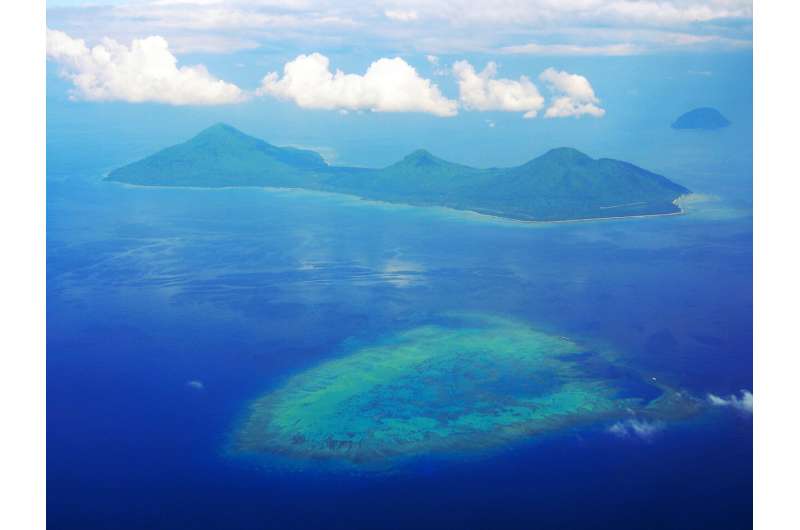Geochemical analyses of stone artifacts reveal long-distance voyaging among Pacific Islands during the last millennium

Polynesian peoples are renowned for their advanced sailing technology and for reaching the most remote islands on the planet centuries before the Europeans reached the Americas. Through swift eastward migrations that are now well covered by archaeological research, Polynesian societies settled virtually every island from Samoa and Tonga to Rapa Nui/Easter Island in the east, Hawai’i in the north, and Aotearoa/New Zealand in the south. But little is known about Polynesian migrations west of the 180th meridian.
In order to better understand the relationship between these Polynesian societies of the western Pacific, Melanesia and Micronesia—often referred to as “Polynesian Outliers”—a multidisciplinary team of researchers analyzed the geochemical signature of stone artifacts collected in Vanuatu, the Solomon Islands and the Caroline Islands between 1978 and 2019. An international research team, led by the Centre National de la Recherche Scientifique, was able to identify the geological origin of these artifacts after comparing their geochemical and isotopic compositions with reference datasets of natural rocks and archaeological quarries in the region.
The research is published in the journal Science Advances.
The connection to the Polynesian homeland
Adzes are versatile cutting tools comparable to axes. Among the eight adzes or adze fragments the researchers analyzed, six were sourced to the same large fortified quarry complex of Tatagamatau on Tutuila Island (American Sāmoa), which is located more than 2,500 kilometers away in the Polynesian homeland.
“Tatagamatau adzes were among the most disseminated items across West and East Polynesia, and the sourcing of Taumako and Emae adzes suggest bursts of long-distance mobility towards the Outliers similar to those that led to the settlement of East Polynesia,” says lead author Aymeric Hermann, researcher at Centre National de la Recherche Scientifique and associate researcher at the Department of Linguistic and Cultural Evolution at the Max Planck Institute for Evolutionary Anthropology. Hermann points out that the transportation of such socially valued items—often passed down for generations among Polynesian chiefly families—suggests carefully planned voyages, rather than accidental landfalls.
The geochemical investigation of stone artifacts from the Polynesian Outliers also provides critical information on inter-island transfers between the Polynesians and their neighbors in the western Pacific, specifically between the Banks Islands and Central Vanuatu, and between the Bismarck and the Caroline Islands. The team highlights that such inter-island contacts are signals that Polynesian sailors might have played an important role in the reappraisal of long-distance mobility and in the distribution of specific material culture items and technologies such as shell adzes, back-strap loom, and obsidian points among the mosaic of Pacific Island societies in the western Pacific during the last millennium A.D.
“A recent study describes an obsidian stemmed point as a chiefly heirloom found on Kapingamarangi Island with a geochemical signature matching an obsidian source on Lou Island in the Admiralties: this is an exciting find that echoes our identification of a basalt flake from mainland New Britain on that same atoll,” adds Hermann.
Long-distance mobility in the past
In the Pacific region, geochemical sourcing has been particularly successful at locating sources of stone artifacts and tracing the transport of specific items across distant islands and archipelagos. Such material evidence of long-distance inter-island voyaging shows that Pacific Island societies were never completely isolated from one another. These patterns of interaction are central to our understanding of the deeply intertwined history of cultural systems in the Pacific.
In this study, atomic emission spectroscopy and mass spectrometry were used to measure concentration of oxides, trace elements and ratios of radiogenic isotopes in order to identify geological provenances with a high level of accuracy. Thanks to the collaboration of experts in archaeology, geochemistry and data science, a cutting-edge approach to geochemical sourcing was developed, which involves the use of computer-assisted comparisons with open-access databases.
More information:
Aymeric Hermann, Artefact geochemistry demonstrates long-distance voyaging in the Polynesian Outliers., Science Advances (2023). DOI: 10.1126/sciadv.adf4487. www.science.org/doi/10.1126/sciadv.adf4487
Citation:
Geochemical analyses of stone artifacts reveal long-distance voyaging among Pacific Islands during the last millennium (2023, April 21)
retrieved 21 April 2023
from https://phys.org/news/2023-04-geochemical-analyses-stone-artifacts-reveal.html
This document is subject to copyright. Apart from any fair dealing for the purpose of private study or research, no
part may be reproduced without the written permission. The content is provided for information purposes only.
For all the latest Science News Click Here
For the latest news and updates, follow us on Google News.

